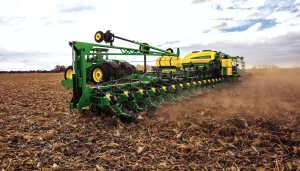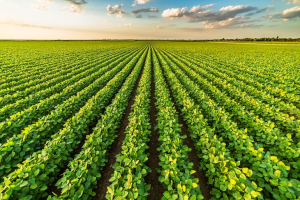Commercial Farming: Navigating the Modern Landscape
Commercial Farming
Commercial farming, also known as agribusiness or industrial agriculture, refers to the practice of producing agricultural products on a larger scale to sell them for profit. It involves the use of advanced technologies, mechanization, and modern techniques to maximize productivity and efficiency. Commercial plays a significant role in meeting the demands of a growing global population for food, fiber, and other agricultural products.
In today's fast-paced world, agriculture has undergone a remarkable transformation, giving rise to the phenomenon of commerce. This method of large-scale agricultural production has revolutionized the way we grow and supply food to an ever-growing global population. In this article, we'll dive deep into the concept of commercials, its benefits, challenges, and its role in shaping our modern food systems.
https://www.youtube.com/watch?v=nziA33FrhoI&pp=ygUSQ29tbWVyY2lhbCBGYXJtaW5n
Key Characteristics of Commercial Farming:
Scale: Commercial farms are typically much larger in size compared to traditional family farms. These farms cover extensive areas of land and often specialize in growing a few specific crops or raising particular types of livestock.
Technology and Mechanization: Commercial farming heavily relies on modern technology and machinery to increase efficiency and productivity. Tractors, combine harvesters, irrigation systems, and other equipment are commonly used to perform tasks that would be labor-intensive on smaller farms.
Monoculture: Many commercial farms practice monoculture, which means growing a single type of crop over a large area. Monoculture can lead to higher yields but also carries risks such as increased vulnerability to pests and diseases.
Intensive Livestock Production: In addition to crop cultivation, commercial farming often involves intensive livestock production. Animals are raised in confined spaces using specialized methods to maximize production efficiency.
Use of Inputs: Commercial farming relies on the use of fertilizers, pesticides, and herbicides to enhance crop growth and protect against pests and diseases. This can lead to concerns about environmental impact and sustainability.
Economies of Scale: Commercial farming aims to benefit from economies of scale by producing large quantities of agricultural products. This can lead to lower production costs and potentially lower prices for consumers.
Market Orientation: Unlike subsistence farming, which focuses on producing food for personal consumption, commercial farming is oriented toward the market. The goal is to generate profits by selling products to wholesalers, retailers, and other buyers. At its core, commercial farming refers to the large-scale cultivation of crops and livestock with the primary goal of generating profit. Unlike traditional subsistence farming, where families grow food primarily for their consumption, commercial farming focuses on maximizing yields and efficiency to meet market demands. Discover more about American Farming
Evolution of Agricultural Practices
The journey of agriculture from manual labor to modern machinery has been remarkable. From the early days of subsistence farming, where oxen and plows were the main tools, to the utilization of advanced tractors, drones, and biotechnology, commercial farming has embraced innovation and technology.
[caption id="attachment_351" align="aligncenter" width="300"] Commercial Farming[/caption]
Commercial Farming[/caption]
Characteristics of Commercial Farming
Commercial farms are characterized by their vast acreage, specialized crops or livestock, and streamlined management practices. These farms often employ modern irrigation systems, fertilizers, and pesticides to optimize growth and prevent loss.
Advantages of Commercial Farming
Commercial farming brings several advantages to the table. It ensures a stable food supply for growing populations, stimulates economic growth by creating jobs, and encourages rural development. Moreover, the implementation of scientific practices leads to increased productivity and better utilization of land.
Challenges and Concerns:
Environmental Impact: The use of agrochemicals and monoculture practices can lead to soil degradation, water pollution, and loss of biodiversity.
Resource Intensity: Commercial farming can be resource-intensive, requiring substantial amounts of water, energy, and land. This can contribute to issues of resource scarcity and environmental strain.
Food Security: While commercial farming can boost food production, it can also lead to dependency on a few major crops, potentially affecting food security in the event of crop failures. Read more about Integrated Farming System
Challenges Faced by Commercial Farmers
Despite its benefits, commercial farming is not without challenges. Environmental concerns, such as soil degradation and water pollution, can arise from excessive chemical use. Additionally, market fluctuations and dependency on a few key crops can leave farmers vulnerable to economic instability. In recent years, sustainability has become a focal point in agriculture. Commercial farmers are adopting practices like crop rotation, organic farming, and integrated pest management to mitigate environmental impacts and ensure long-term viability.
Technological Innovations in Commercial Farming
Technological advancements have revolutionized commercial farming. Precision agriculture uses sensors and data analysis to optimize planting and resource allocation, while genetic engineering has led to the development of crops with higher yields and resistance to pests.Commercial farming can have both positive and negative impacts on local communities. While it boosts economic growth, it can also lead to the displacement of small farmers and disrupt traditional ways of life.
The Role of Government Policies
Government policies play a crucial role in shaping the landscape of commercial farming. Subsidies, trade agreements, and regulations can influence the decisions farmers make and impact global agricultural marketing. Commercial farming is intricately linked to global trade. The ability to produce surplus crops allows countries to engage in international trade, influencing economies and fostering cooperation among nations.
[caption id="attachment_350" align="aligncenter" width="300"] Commercial Farming[/caption]
Commercial Farming[/caption]
The Future of Commercial Farming
The future of commercial farming is marked by a quest for sustainability and innovation. Vertical farming, hydroponics, and agroforestry are emerging as potential solutions to address the challenges faced by traditional commercial farming.
Conclusion
In conclusion, commercial farming has reshaped the way we produce and consume food. With its blend of tradition and technology, it continues to be a driving force in global agriculture. As we move forward, finding a balance between profit, sustainability, and equitable distribution will be essential for the growth and evolution of commercial farming.
FAQs
Q: What is the main goal of commercial farming?
A: The main goal of commercial farming is to generate profit through large-scale cultivation of crops and livestock.
Q: How does technology impact commercial farming?
A: Technology enhances productivity and efficiency in commercial farming through practices like precision agriculture and genetic engineering.
Q: What are the environmental challenges of commercial farming?
A: Environmental challenges include soil degradation, water pollution, and overuse of pesticides.
Q: How does commercial farming contribute to the economy?
A: Commercial farming stimulates economic growth by creating jobs, generating revenue, and contributing to global trade.
Q: What does the future hold for commercial farming?
A: The future involves a focus on sustainability and innovation, with concepts like vertical farming and agroforestry gaining prominence.
 Commercial Farming[/caption]
Commercial Farming[/caption]
 Commercial Farming[/caption]
Commercial Farming[/caption]
